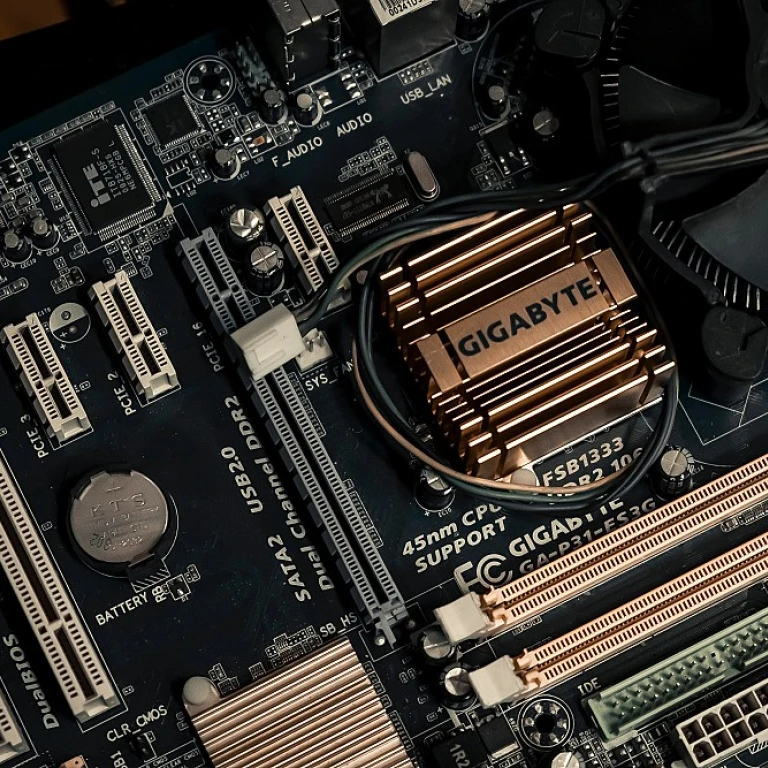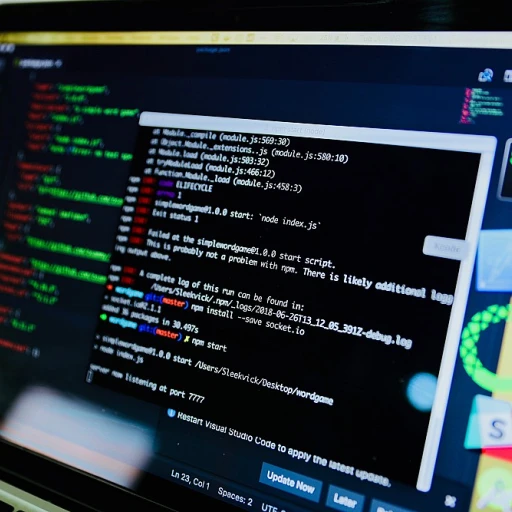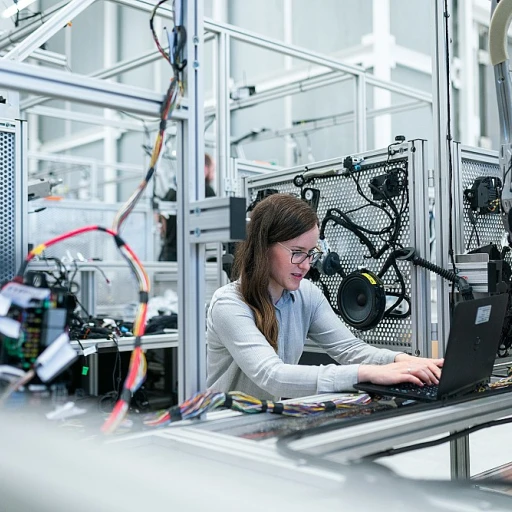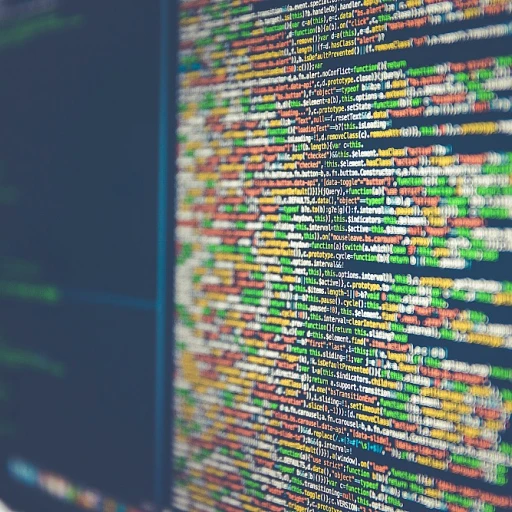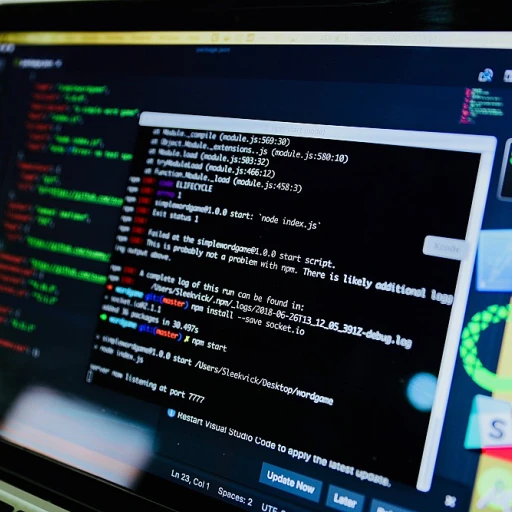
Understanding Autonomous Software Systems
Getting to Know Autonomous Software Systems
Autonomous software systems are like the silent workhorses of our tech-driven world. They operate independently, making decisions without human intervention. Think of them as the brains behind autonomous vehicles, smart homes, and even some manufacturing processes. These systems use data and learning to adapt and improve over time, much like how humans learn from experience.
At the heart of these systems is a blend of artificial intelligence, machine learning, and deep learning. These technologies enable the software to process vast amounts of data, recognize patterns, and make decisions in real time. It's like having a super-smart assistant that never sleeps, constantly analyzing and optimizing its performance.
The Role of Humans in Autonomous Systems
While these systems are designed to operate independently, humans still play a crucial role in their development and oversight. Software development teams design and test these systems, ensuring they meet safety and performance standards. Human oversight is especially important in areas like autonomous vehicles, where safety is paramount.
Testing and refining these systems is an ongoing process. Developers use a variety of tools and models to simulate real-world scenarios, allowing them to identify and fix potential issues before they arise in actual use. This rigorous testing helps build trust in autonomous systems, ensuring they can handle complex tasks without human intervention.
Challenges and Ethical Considerations
As we continue to rely more on autonomous systems, ethical considerations become increasingly important. How do we ensure these systems make decisions that align with human values? What happens if an autonomous vehicle makes a mistake? These are questions that developers and ethicists are actively exploring.
For those interested in the ethical implications of AI and autonomous software, you can read more about it here.
In summary, autonomous software systems are reshaping how we interact with technology. They offer exciting possibilities but also present challenges that require careful consideration and responsible development.
The Role of AI and Machine Learning
AI: The Brain Behind the Operation
Artificial intelligence and machine learning are the driving forces behind the magic of autonomous software systems. Think of AI as the brain that powers these systems, making decisions, learning from data, and adapting in real time. From autonomous vehicles to smart home devices, AI is the core that enables these systems to function without constant human intervention.
Machine learning, a subset of AI, plays a crucial role in this process. It involves training algorithms on vast amounts of data to recognize patterns and make predictions. For example, in autonomous vehicles, machine learning helps the system understand traffic patterns, recognize obstacles, and make split-second decisions to ensure safety.
Neural Networks and Deep Learning: The Learning Tools
Neural networks, inspired by the human brain, are another essential component. They consist of layers of interconnected nodes that process information and learn from it. Deep learning, a type of neural network, allows systems to learn complex tasks by analyzing large datasets. This is particularly useful in applications like computer vision, where systems must interpret visual data from cameras in autonomous vehicles.
Real-World Applications: From Code to Cars
AI and machine learning aren't just buzzwords; they're already shaping industries. In automotive, autonomous vehicles are becoming a reality, thanks to advancements in AI. These vehicles rely on embedded software and sensors to navigate roads, avoid obstacles, and ensure passenger safety. The development of these systems involves rigorous testing and refinement to meet safety standards.
In software development, AI is streamlining processes by automating code generation and testing. Tools powered by AI can analyze existing codebases, suggest improvements, and even write new code, accelerating the development cycle and reducing human error.
Challenges and Considerations
While the benefits are clear, there are challenges too. AI systems must be designed with care to avoid biases in decision making. Ensuring transparency and accountability in AI-driven systems is crucial, especially when they impact human lives. Developers must also consider the ethical implications of autonomous systems, balancing innovation with responsibility.
For more insights on the evolution of robotics software development, check out our detailed discussion on robotics software development.
Impact on Industries
Driving Change in Every Sector
Autonomous software systems are reshaping industries by leaps and bounds, and we're just getting started. You could say they work like a trusty sidekick to AI and machine learning, creating a ripple effect across various sectors. From the way we travel to how we conduct business, these smart systems are showing what brainpower combined with code can achieve. Today, self-driving cars aren't just futuristic anymore—they're quickly becoming reality. Autonomous vehicles are a perfect showcase of how this tech thrives. Think about it: software that can make real-time decisions, use computer vision to "see" the road ahead, and learning from data to enhance safety. Leading car manufacturers are investing in systems development and even embedding software straight into their vehicles for continuous improvement. It's a new era for transportation, with machines taking over the wheel while learning as they go. Beyond the roads, industries like healthcare, logistics, and even entertainment are undergoing change. Healthcare, for instance, benefits from software development that aids in diagnostics, treatments, and patient monitoring. Machine learning and neural networks assist in rapid data analysis, delivering results that could take humans hours, if not days. In logistics, companies are banking on systems that can handle the movement of goods, right from warehouse optimization to delivery, minimizing human intervention while boosting efficiency. The aim? To streamline workflows and better decision making with model-based development. The entertainment industry is another fascinating area, where autonomous systems personalize user experiences, recommending content based on individual preferences, thanks to algorithms that learn what we like. But it's not always a seamless ride. Testing and improving these systems can be tricky. Imagine the complexity of ensuring autonomous vehicles make the right choice every time or that an automated medical diagnostic tool operates without a hitch. Thus, rigorous testing, a constant learning process, and using open-source tools are essential steps in the ecosystem today. It’s ironic yet impressive just how much control starts to come from a lack of human control. As we leap further into a software-driven world, future software in autonomous systems will keep bridging AI, embedded software, and data at a pace that’s not easing up any time soon. Sources: National Highway Traffic Safety Administration, Robotics Business Review, HealthIT.govChallenges and Ethical Considerations
Facing Ethical Questions and Safety Issues
When it comes to building autonomous software, ensuring human safety and considering ethical aspects are front and center. These systems, being crucial in applications ranging from autonomous vehicles to decision-making support in healthcare, require rigorous testing and validation. Focusing on autonomous vehicles, the development involves numerous challenges related to safety. The vehicles must interact seamlessly with human drivers, pedestrians, and infrastructure. Real-time data processing, guided by AI and machine learning algorithms, demands a high level of reliability. Undoubtedly, mistakes here could have life-or-death consequences, making robust design and software testing indispensable. AI's decision-making capabilities also raise ethical questions. Consider a software system that decides who receives limited medical resources. Should it prioritize based solely on data, or should there be a 'human' touch? Such questions are pressing and organizations need to develop codes of conduct, much like they're writing software code. When talking about autonomous systems embedded in everyday life, we can't ignore the potential for bias within AI models. These biases can emerge from skewed datasets that fail to represent diverse populations. Developers must prioritize data quality and diversity during model development to ensure fairness and equality for all users. Additionally, the trust aspect involves both technical transparency and user education. It's not just about what's happening under the hood, but how we communicate it to the people relying on these autonomous tools. After all, a system embedded with AI and machine learning is only as good as the confidence users have in it. Addressing safety and ethics isn’t just about meeting legal standards, though that’s essential. It's about reassuring users that autonomous software systems work in their best interest, ensuring they're efficient, unbiased, and safe.Future Trends and Innovations
Game-Changing Shifts Ahead
As we look at the horizon, it's clear that the continued development of autonomous software is going to change how we interact with technology across the board. Think of autonomous vehicles, and how they've been on a steady path from sci-fi fantasy to everyday reality. The fusion of machine learning, computer vision, and neural networks have powered these vehicles to not only navigate roads but to be safe and reliable on them. Here's where the road gets exciting:- Real-Time Decision Making: Autonomous systems are increasingly expected to make decisions at lightning speed, relying on vast streams of data. That ability to act quickly will lead to more intuitive systems, from city infrastructure to personal devices.
- AI Integration: AI will be the driving force behind these systems. Deep learning and neural networks will push the boundaries of what autonomous software can do, making systems more sophisticated yet user-friendly.
- Software Development Tools: New, more efficient tools are being churned out to keep pace with these advancements. Open source platforms are giving developers access to state-of-the-art libraries and frameworks, making it easier to build and test innovative systems, and inevitably lowering costs.
- Model-Based Design: This approach will see growth, allowing developers to simulate and optimize systems before even writing code. It enhances accuracy and saves a ton of time during the testing phases.

